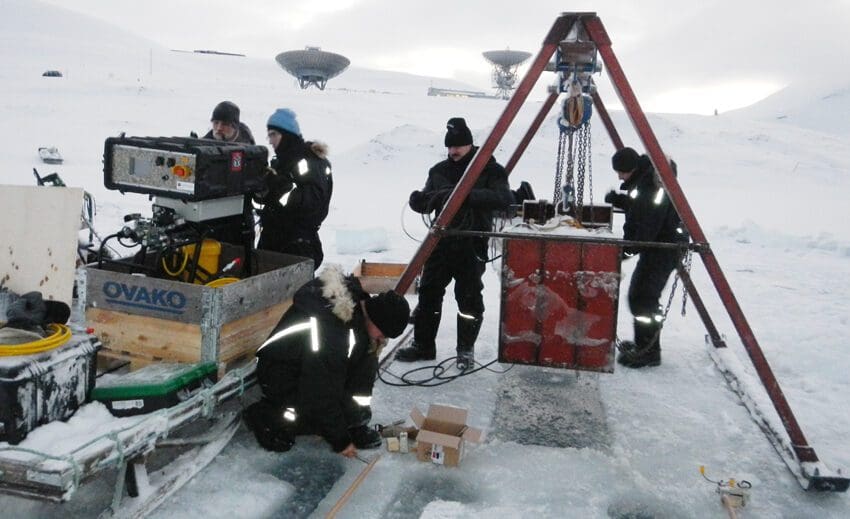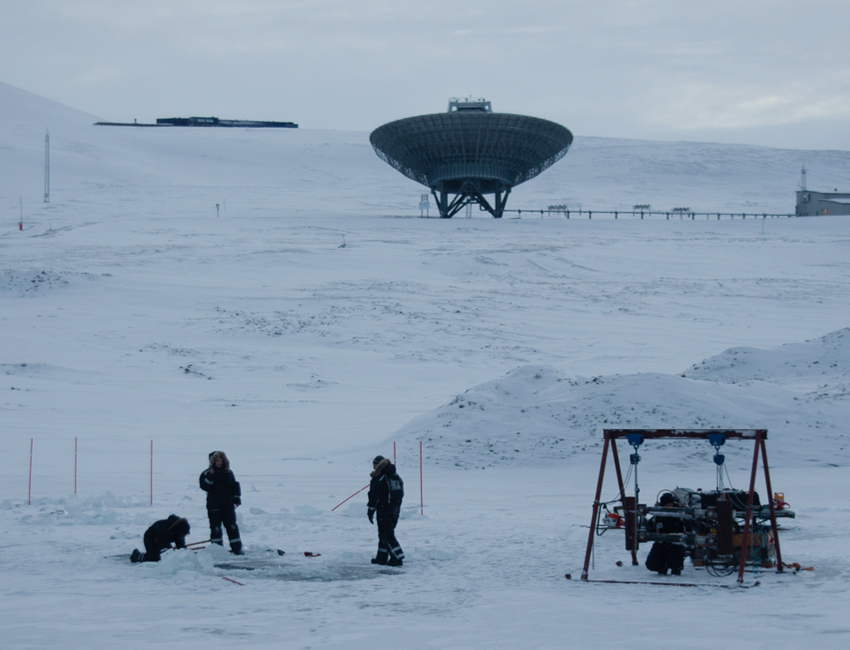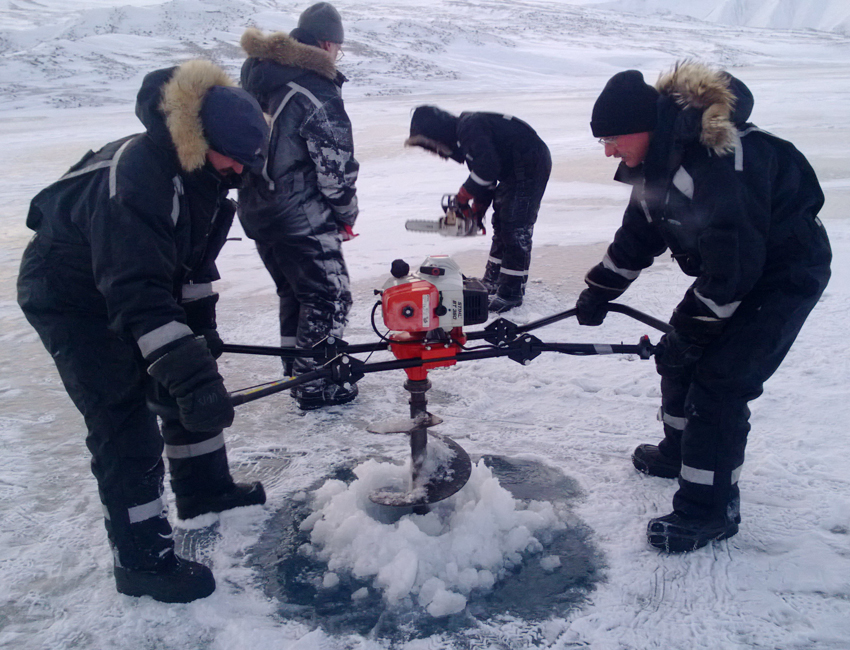AT-332 Physical Environmental Loads on Arctic Coastal and Offshore Structures (10 ECTS)
ID:
AT-332
CREDITS:
10 ECTS
APPLICATION DEADLINE:
April 15, 2024
START DATE:
November 04, 2024
END DATE:
December 12, 2024
COURSE PERIOD:
Autumn semester (Block 7)

AT-332/832 fieldwork. Photo: Nataly Marchenko/UNIS.
| Grade: | Letter grade (A through F) |
| Course Cost: | None |
| Course Capacity Min/Max: | 10/25 students (AT-332/832 in total) |
| Language of instruction: | English |
| Examination support material: | Bilingual dictionary between English and mother tongue. Non-programmable calculator. |
Course requirements
Enrolment in a relevant master programme. Basic knowledge of mathematics and physics at bachelor level.
Academic content
The course introduces students to modern physical and mathematical models describing physical environmental loads on coastal and offshore structures in the Arctic in ice free and ice seasons. The course is subdivided into two parts based on hydrodynamic analysis of water actions of structures and seabed, and analysis of ice actions on structures and coastal zone by solid mechanics methods.
The main focus of the first part of the course is on the models describing propagation of surface gravity waves, wave actions on fixed and floating structures, drift of floes and icebergs, sediment transport, effects of ground water migration, and soil permeability in the coastal zone. Fieldwork is organized in the area of Longyearbyen harbour and focused on the investigation of waves and sea current actions on floating structures and sediment transport. Laboratory work is performed with the UNIS wave tank.
The main focus of the second part of the course is on the models describing ice behaviour under thermal and mechanical loads, bearing capacity of the ice under static and moving loads, and ice actions on offshore and coastal structures. Lectures also include formulation of codes for the design of offshore constructions in ice conditions and probability methods for the estimates of risks due to long term exploitation of offshore structures. Laboratory work performed in the cold laboratory of UNIS is focused on investigation of ice strength at laboratory scale. Fieldwork on full scale strength of fresh ice is organized on a lake near Longyearbyen depending on weather conditions.
Seminars include analytical exercises and numerical simulations by Comsol Multiphysics, MatLab and Wolfram Mathematica.
Learning outcomes
Upon completing the course, the students will:
Knowledge
- understand and be able to use specified phys.-math models describing propagation of surface gravity waves, wave actions on floating and fixed structures, sediment transport, permeability of soils and saline ice, ice rheology and behaviour under static and dynamic loads, ice actions on coastal and offshore structures
- have basic knowledge of ISO standards and probabilistic estimates of ice loads on offshore and coastal structures, methodology of ice strength tests at laboratory and full scales
Skills
- experience in modelling with Comsol Multiphysics
- experience of fieldwork in the coastal zone of Svalbard fjords in the ice-free season
- experience in performing ice tests in the cold laboratory of UNIS
General competences
- have Arctic survival and safety experience from fieldwork on land and sea during winter/ice season
- be able to conduct research work, independently and in groups, in a cold laboratory and in the field
- have competence in preparing reports and presenting results in seminars
Learning activities:
The course extends over 6 weeks including compulsory safety training, and is run in combination with AT-832.
Seminars include mathematical exercises, performing of results of field and laboratory work, and exercises for exam preparation. Each student should prepare a report in relation to course topics. Reports can be individual or in groups. See “Academic content” for further description of learning activities.
Summary
- Total lecture hours: Ca. 35 hours
- Total seminars hours: Ca. 10 hours
- Laboratory and fieldwork: Ca. 7–8 days
Compulsory learning activities
- Safety training
- Seminars
- Presentations
- Laboratory work
- Fieldwork
All compulsory learning activities must be approved in order to sit the exam.
Assessment
| Method | Duration |
Percentage of final grade
|
| Written report 1 | 20% | |
| Written report 2 | 20% | |
| Written exam | 4 hours | 60% |
All assessments must be passed in order to pass the course.
Each assessment is graded, and subsequently combined into a single grade. Partial grades for each assessment will be available.
Student life


